When I’m at the studio, I love to see the young, hungry competitive couples. It reminds me of those years when my whole life was focused on dancing and competing. We lived it in every aspect of our lives. We worked to have money to dance. Our social lives, personal lives and professional life revolved around the same people. Our world was small, but intense!
These couples I see today remind me of those fun, exciting times, but I also remember the struggles of that life.
One of which is the stress and friction that comes from the intimate, delicate relationship of partners.
self awareness. awakening. enlightenment. togetherness of mind and body.
How many times have we seen this at the studio from partners:
- insulting each other
- yelling or fighting
- storming off the floor
- one partner brought to tears
- belittling or humiliating each other
How many times have we felt embarrassed to be witnessing it? How many times have we been guilty of doing it ourselves? I admit to both.
No level of partners is excluded. I’ve seen everyone from world finalists to teachers with their pro-am students demonstrating this type of behavior. (and those poor students are paying for this treatment!)
There is a futility and waste of energy in negative partnering. And for what? Dance partners are on the same team! When a team member is demoralize by their fellow team member, it only serves to damage the team. Granted, there is a lot of stress that comes from the intensity of competition. For professional couples and high ranking amateurs, there is understandably a lot riding on the couple’s success. The pressure is high!
So how, can partners demand (and encourage) the most out of each other in a constructive way?
the Zen of partnering
As they say, hindsight is 20/20. Although I had some introduction to the early concepts of the zen of partnering, it’s only been as I’ve matured that I see how much more I could have done with a different attitude towards myself and my partners.
Keys to Peaceful Partnering
self awareness
awakening
enlightenment
togetherness of mind and body
self awareness:
have you ever been in this conversation:
you’re leading too hard..
well, if you were faster, I wouldn’t have to!
The classic blame game. It’s always easy to look outside of ourselves for the source of the problem. Being self aware means that when a problem comes up, to first look at how we ourselves can make an adjustment.
This takes creative thinking and breaking free from the thought patterns we typically are familiar with. I’ve found that now when I have an initial “familiar ” reaction, instead of saying it, I take time to look at the problem from a different angle.
If Erik says I am too slow, instead of defensively replying that he’s too strong, I review how I’m arriving into the previous pattern, or how my body position might be inhibiting a faster reaction.
I also ask him to let me try a few things to fix it. Through this process, I’m able to learn more about my own dancing. And as we try new options, it keeps Erik’s mind open to the fact that he might also make adjustments that will be helpful.
awakening:
When we first began to dance, taking a forward stride was pretty much just like normal walking. As we learn, now a forward stride is so much more, as we are awakened to the fact that the stride develops power and length by adding in greater knee flexion, leg swing and detailed footwork, body shape, etc.
How much different a “walk” is to the experienced dancer as it is to the beginner! Awakening in the zen of partnering reminds us to think outside the box, be willing to look at a problem from a different angle in order to correct it.
If I find my partner and I arguing about the same problems again and again, I need to “awaken” that the current perspective is not getting us anywhere, and a new approach needs to be taken.
enlightenment:
This reminds me of a favorite quote from Picasso:
I paint objects as I think them, not as I see them. –Pablo Picasso
When partnering, sometimes we have to look past what we see and work from what we feel. And sometimes it’s the opposite! Which ever way, to reach the goal it takes an enlightened view and allowing yourself to experiment beyond what your expectations are. As in Picasso’s quote, he goes beyond initial reactions (what he sees) to create a masterpiece (his art).
togetherness of mind and body:
This refreshed outlook is not only physical, but mental. In the view of developing a peaceful partnership, togetherness of mind and body means seeing the scope of how much more we can accomplish together. We also see how much we need to rely on each other (rather then degrade each other) to achieve our mutual goal.
out with the old, in with the new
I think there is somewhat of a traditionalist mentally in partnering that needs to be overcome and evolved. Growing up, we saw couples older then us, who were successful, behaving in this manner. It’s kind of expected in our ballroom culture.
But just because that’s the way “its always been and worked ” doesn’t mean it is the most effective way. It’s good to be progressive and take the best of tradition with the best of innovation, to make things the most effective.
Positive partnering is effective. It keeps longevity in partnerships, and longevity pays off in success. It also keeps morality high, and makes for a more happy ballroom environment. Dancing is supposed to be joyful! Practicing the zen of partnering will help to keep partners more satisfied, practice time more productive and ultimately more successful.
Namaste Dancers!
- Write your Dance: Improve your dancing through journaling - November 12, 2019
- The Difference Between Oversway and Throwaway: Ballroom Video Preview - June 8, 2018
- Principles of Movement: Ballroom Basics Video - September 21, 2016

we respect your privacy and will never share your information! Unsubscribe at any time.

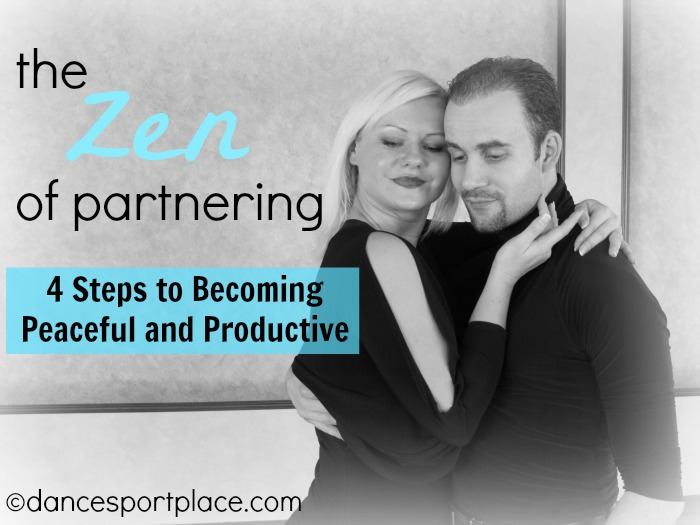
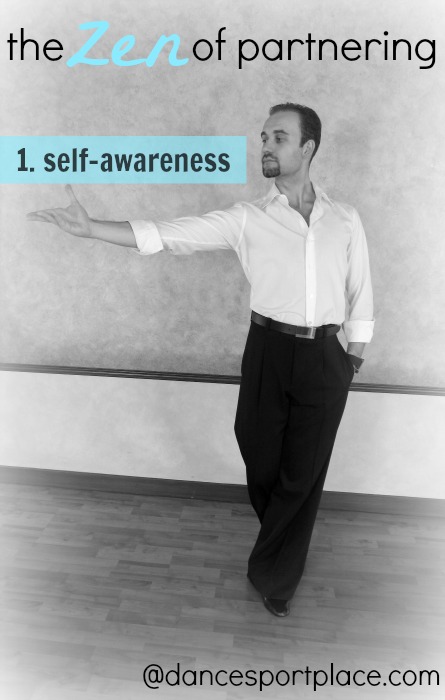
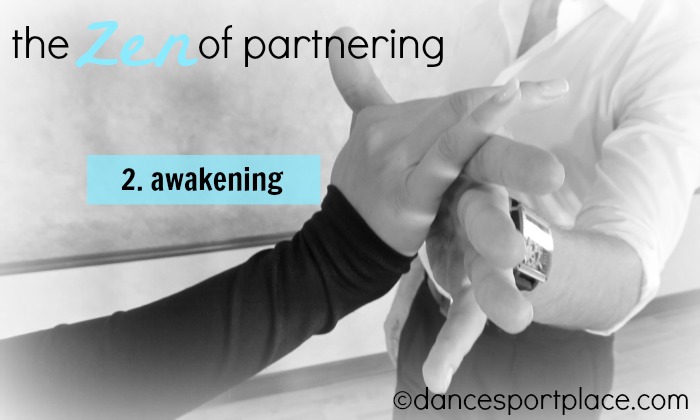
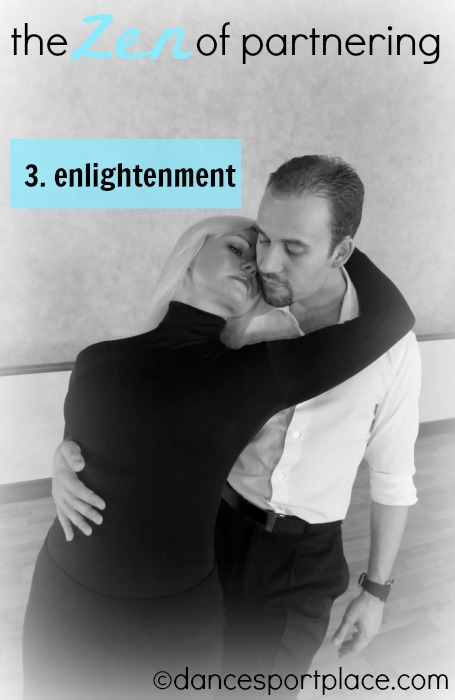
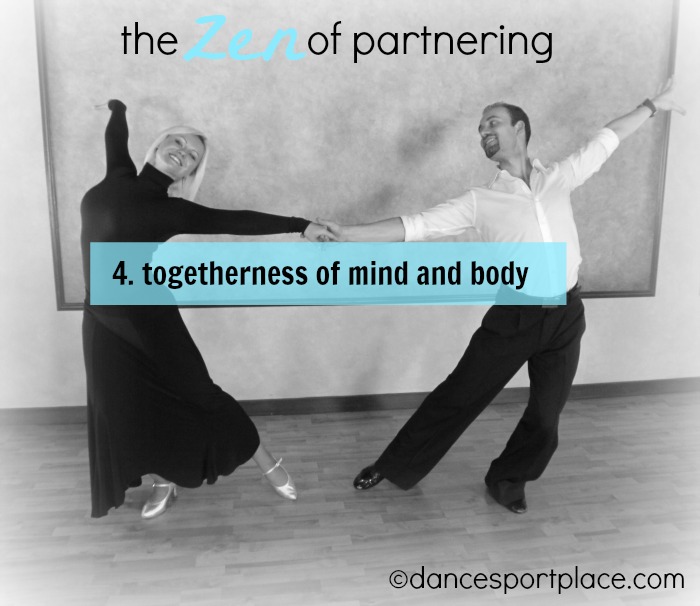



Reading The Zen of Partering”certainly gave
me a lot of “food for thought”
Cheers to a more peaceful partnership! Thanks for your comment, Suzy, and stopping by.